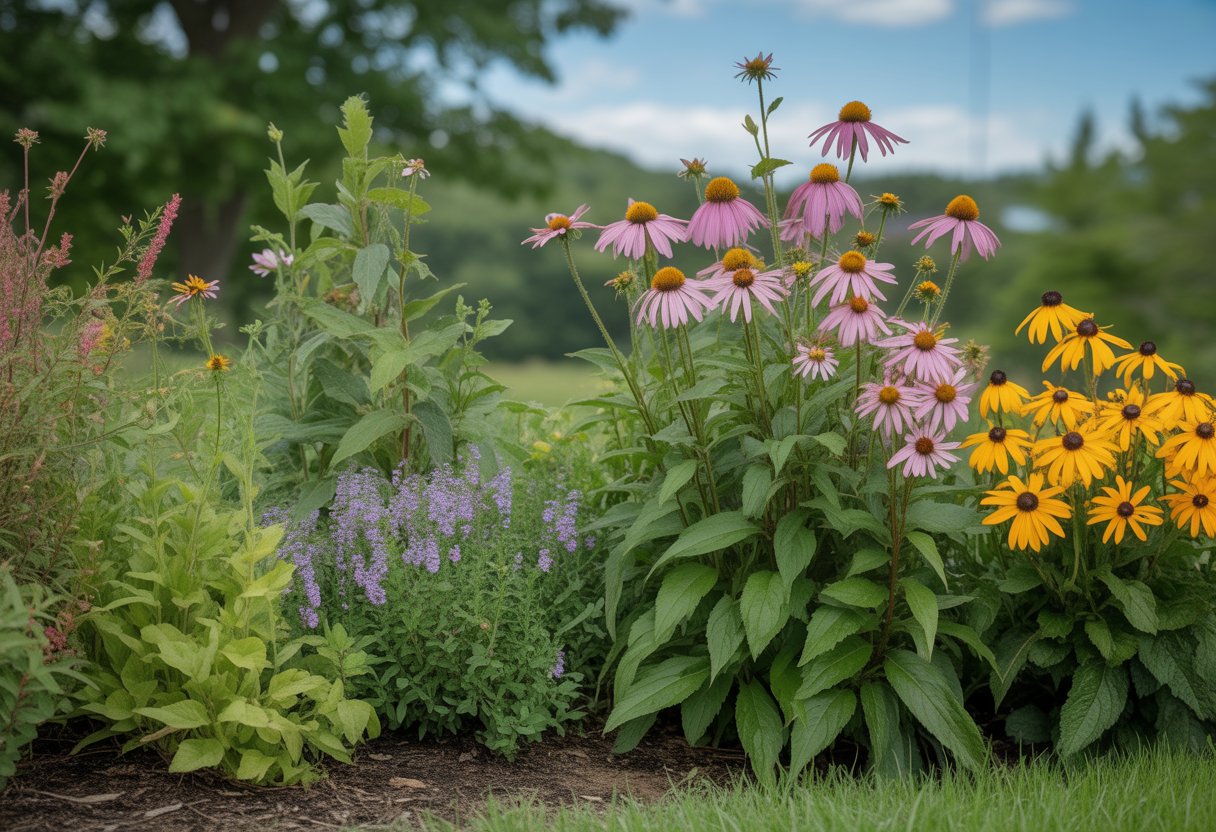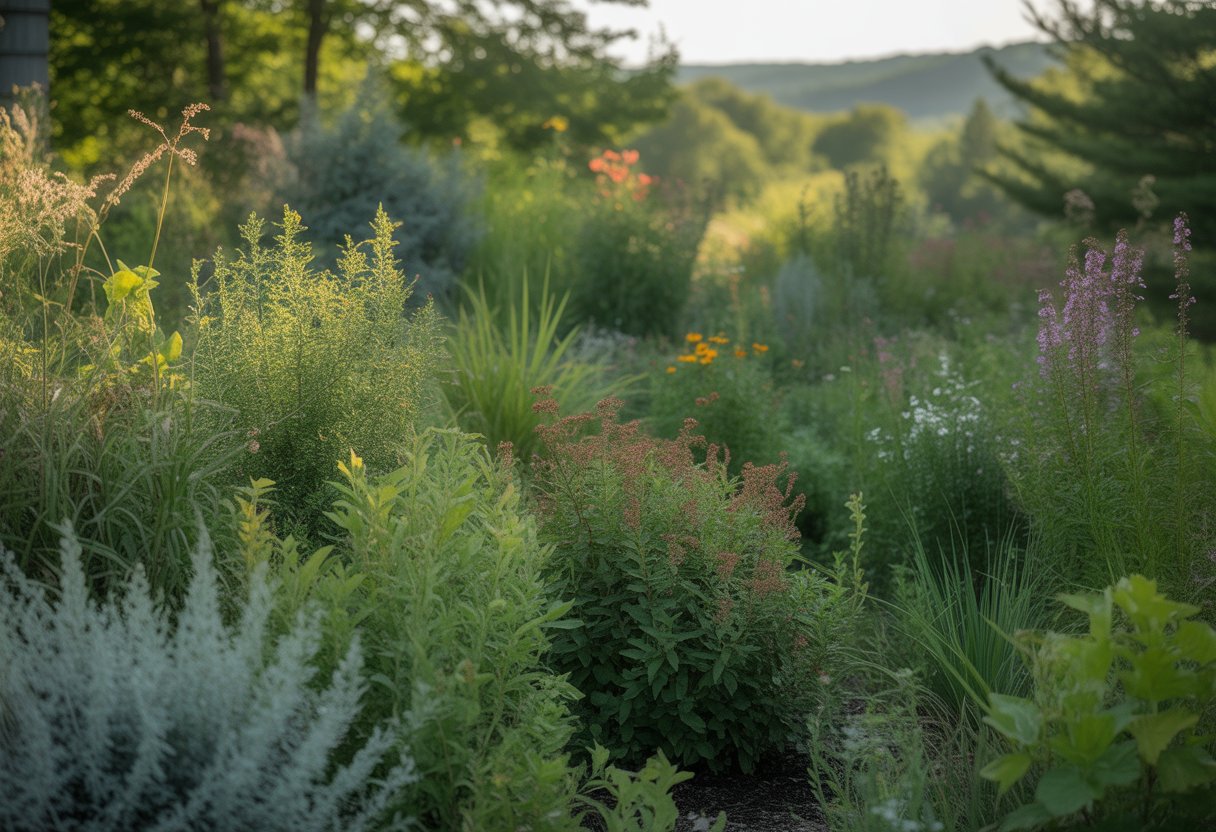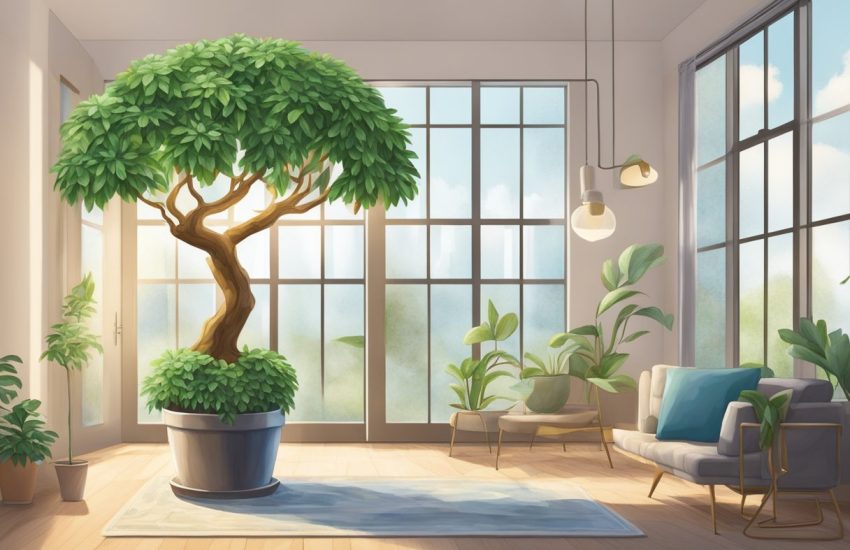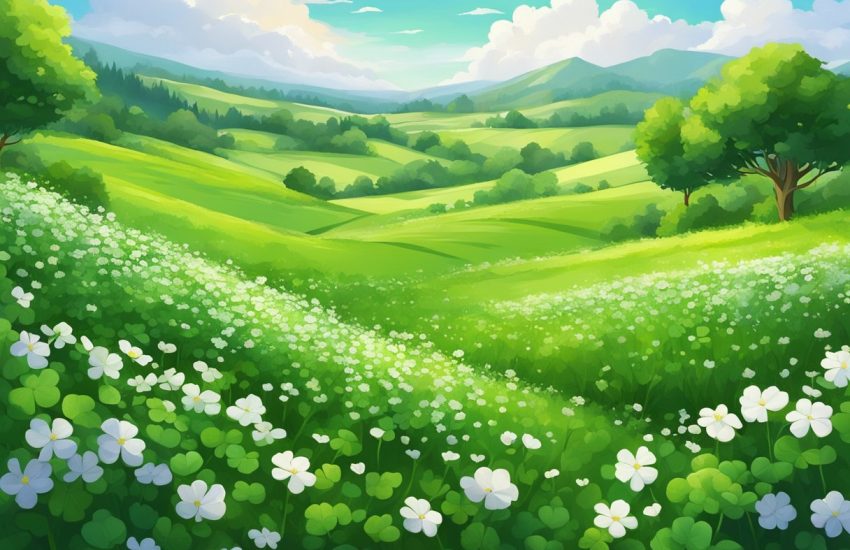Low Maintenance Native Plants New Hampshire for Easy Sustainable Gardening
Low maintenance native plants in New Hampshire make life easier for anyone who wants a garden that mostly takes care of itself. These plants already know how to deal with the local climate and soil, so they shrug off drought, pests, and all that extra fussing with fertilizer or chemicals.

Choosing native species like New England asters, serviceberries, and ferns means you get strong growth and beauty, minus the endless chores. These plants also throw a lifeline to local wildlife and help you use less water and fewer chemicals.
If you want to make your yard simpler and more sustainable, it helps to know which native plants need the least attention. This way, you can keep things looking good while letting the landscape do its own thing.
Benefits of Low Maintenance Native Plants in New Hampshire

Low maintenance native plants bring a lot to the table. They boost biodiversity, draw in pollinators, and just plain look great. You get all that with less watering, less work, and fewer chemicals.
Supporting Local Ecosystems
Native plants fit right into New Hampshire’s climate and soil. They give birds, insects, and small mammals both food and shelter.
Their roots help keep soil in place and stop erosion, which is pretty important if you’ve got slopes or sandy spots. Plus, they don’t need much extra water or chemicals to stay healthy.
When you use native plants, you help keep the ecosystem balanced. Local wildlife can stick to what they know and depend on.
Attracting Pollinators and Wildlife
A lot of native plants in New Hampshire are magnets for bees, butterflies, and hummingbirds. These critters count on native flowers for nectar and pollen.
Native flowers tend to bloom when pollinators are out and about, so there’s always something for them to eat. That keeps pollinator populations healthier and more diverse.
Shrubs and trees native to the area also give birds and mammals places to nest and feed. This helps wildlife stick around and keeps things in balance. Want to see more birds? Go native.
Ornamental Value and Landscape Appeal
Let’s be honest, native plants can look just as stunning as anything you’ll find in a fancy catalog. Think New England aster or winterberry holly—both bring color and texture, plus berries or blooms that last through the seasons.
They don’t need much in the way of fertilizer or pesticides, so you spend less time worrying and more time enjoying your yard. These plants usually resist local pests and diseases better than imports.
Mixing native plants into your garden design means you get beauty and resilience. They fit a bunch of garden styles, whether you like things tidy or a little wild.
Top Low Maintenance Native Plants for New Hampshire Gardens
Some native plants barely need your help. They handle New Hampshire’s weather and soil like pros, and they give back by feeding wildlife and looking good with less water or fertilizer.
Here’s a quick look at some perennials, grasses, annuals, and shrubs that are easy to grow.
Best Perennials for Low Upkeep
If you want perennials that won’t let you down, try Echinacea purpurea (Purple Coneflower) or Solidago spp. (Goldenrod). These plants handle poor soil and dry spells once they’re settled in. They also attract pollinators and show off from summer into fall.
Monarda didyma (Bee Balm) gives you fragrant flowers and shrugs off pests. It’s happy in sun or part shade. Asclepias tuberosa (Butterfly Weed) is great for monarchs and doesn’t need much attention after it gets going.
You don’t have to fertilize these perennials much. If you want more blooms, you can deadhead, but honestly, it’s not a must. Their deep roots help keep the soil in place, which is handy if you’ve got slopes.
Native Grasses and Their Uses
For grasses, Panicum virgatum (Switchgrass) and Andropogon gerardii (Big Bluestem) are tough and flexible. They don’t care much about soil type and barely need extra water.
These grasses add movement and texture to your space. You can use them for privacy or as windbreaks since they grow thick and tall. Birds and insects use them for shelter and snacks.
Switchgrass and Little Bluestem handle both wet and dry spots. You just cut them back once in late winter or early spring, and they bounce right back.
Annuals Suited to New Hampshire Climates
If you like annuals, try Ipomoea lacunosa (White Morning Glory) or Coreopsis tinctoria (Plains Coreopsis). They sprout, bloom, and finish up all in one season, adding color with hardly any effort.
Give them sun and well-drained soil, and water them until they’re settled. White Morning Glory climbs and fills in gaps but won’t take over like some non-natives.
They usually bloom from midsummer to early fall. You can collect seeds for next year or let them scatter and come back on their own. Mixing them with perennials keeps your garden in bloom longer.
Shrubs with Red Berries
For shrubs, Ilex verticillata (Winterberry Holly) and Viburnum trilobum (American Cranberrybush) both pump out bright red berries that last into winter. Birds love them, and they add some color when everything else looks pretty dull.
Winterberry likes moist spots and does fine in sun or part shade. American Cranberrybush prefers well-drained areas and starts with white flowers in spring before the berries show up. Both resist most pests and diseases.
Just prune them now and then to keep their shape. The berries aren’t just for show—they help wildlife get through the winter.
Designing and Maintaining a Native Plant Landscape
If you want your native plant landscape to work, you’ve got to match your plants to the spot. Think about sun, shade, soil, and what kinds of wildlife you want to welcome. Watch out for invasive species—they can sneak in and mess things up.
Creating a Shade Garden with Native Species
Shade gardens in New Hampshire need plants that don’t mind less light and cooler, damp soil. Go for natives like Trillium, Ostrich fern (Matteuccia struthiopteris), and Solomon’s seal (Polygonatum biflorum)—they’re right at home under big trees.
Get the soil ready with compost or leaf mulch to help it hold moisture without getting soggy. Rich, slightly acidic soil works best.
Plant in groups to mimic how they grow in the wild. This keeps things healthy and cuts down on maintenance. Don’t cram too many in or they’ll fight for light and nutrients.
Check on them now and then for pests. Once they’re established, you only need to water during dry spells—they’re pretty tough.
Habitat Considerations for Wildlife Support
Native plant gardens give New Hampshire’s wildlife the food and shelter they need. Try Bee balm (Monarda didyma), Blueberry (Vaccinium angustifolium), and Milkweed (Asclepias spp.) for nectar, berries, and host plants.
Mix up plant heights and bloom times to help different animals all season. Add shrubs and grasses alongside perennials for variety.
Skip the pesticides if you can. Let natural predators handle pests—it usually works out fine.
Water sources like birdbaths or rain catchments bring in even more wildlife. It’s pretty cool to see who shows up when you work with nature instead of against it.
Preventing and Managing Invasive Species
Invasive species can really mess with native plant communities. They outcompete local plants for sunlight, water, and nutrients.
If you’re in New Hampshire, you’ve probably heard of Japanese knotweed (Fallopia japonica) and Purple loosestrife (Lythrum salicaria). These two cause plenty of headaches for gardeners.
Catch them early—walk the garden perimeter and check disturbed spots often. It’s not glamorous, but it works.
Try hand-pulling or cutting invasives before they set seed. Don’t just toss them anywhere; make sure you dispose of the plant material so it doesn’t come back to haunt you later.
Packing your beds with native plants helps crowd out the invaders. Mulch and decent soil care go a long way toward keeping unwanted plants in check, too.


